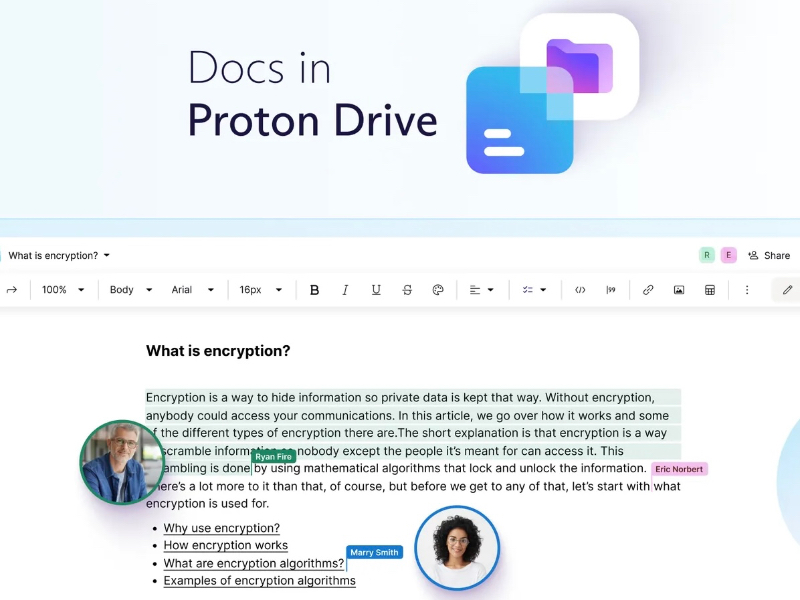- Proton Docs has almost all the features of an ideal document editor, and Proton hopes to compete with Google Docs with its high security.
- Proton Docs promotes itself like this: It’s just as good as Google, but it’s not Google.
OUR TAKE
Proton is just one of the companies trying to offer privacy-focused alternatives to Google and Microsoft that have so far failed to dent their dominance. If Proton can handle image embedding better than Google, it could be a big hit.
–Zora Lin, BTW reporter
What happened
Proton Docs launches today inside Proton Drive as the latest application in Proton’s privacy-focused suite of work tools, attempting to compete with Microsoft Office and Google Workspace with its high-security alternative to Google Docs.
Proton Docs looks a lot like Google Docs. The first version of Proton Docs has almost all the features of an ideal document editor: rich text options, real-time collaborative editing, and multimedia support.
“Everything Google has is on our roadmap,” says Proton PR manager Will Moore.
Proton has long promised never to sell or otherwise use user data. The company says every document, keystroke, and even cursor movement is encrypted end-to-end in real time.
Also read: Google struggles to meet its climate goals in Gemini AI era
Also read: Google Chrome on Android introduces in-app webpage reading
Why it’s important
The launch of Proton Docs makes the selection of Office suites on the market more diversified, and the competition with Google Docs and Microsoft Office is conducive to promoting product innovation and functional progress, but also to provide users with more choices.
Proton has a long-standing commitment not to sell or otherwise use user data, and this commitment is essential to building trust among users.
Proton Docs emphasises high security and privacy protection, which can appeal to users who are concerned about data collection and misuse, and also reflects the importance of security technology in modern software design. It represents a trend in which more and more companies and products are designing and promoting user privacy as a priority in response to the public’s growing concern and demand for data privacy.

